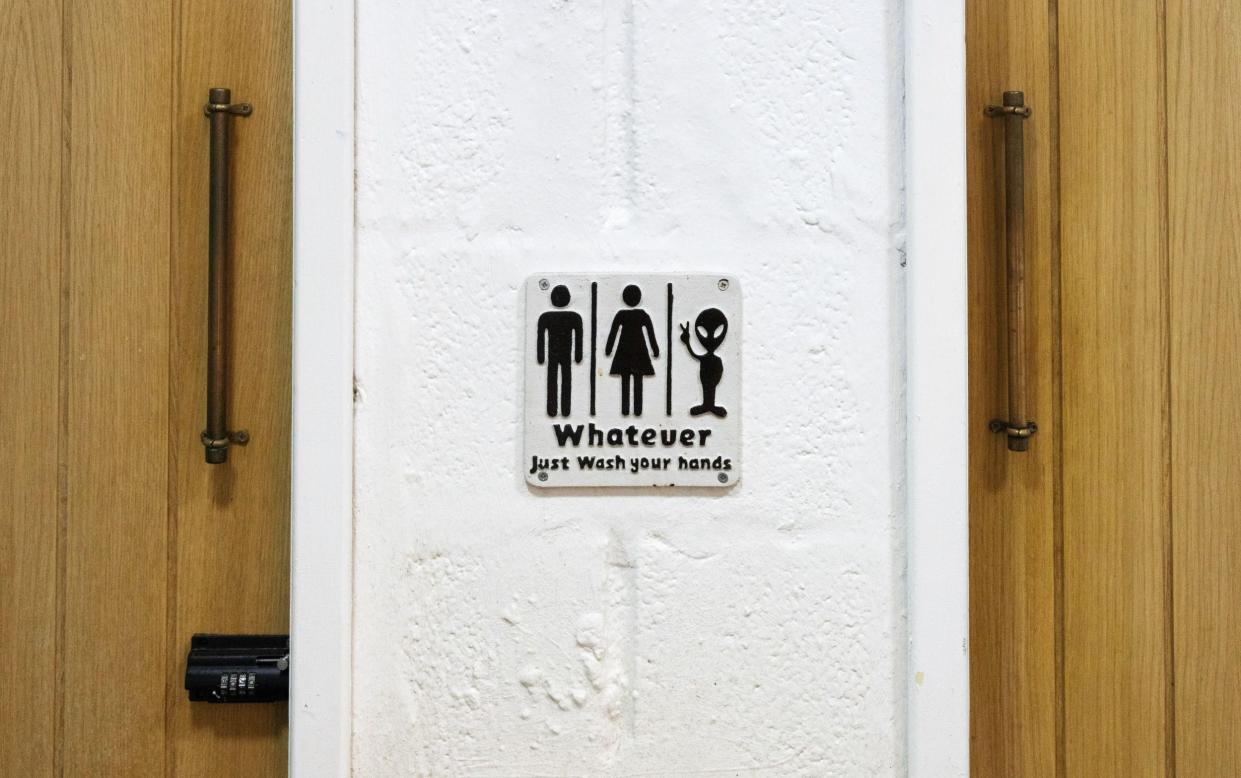Gender-neutral lavatories ‘have more germs than single-sex ones’

Gender-neutral lavatories carry the most germs, research suggests.
The UK study examined the bacteria – including multi-drug resistant superbugs – in a wealth of hospital settings.
Lavatories for women were found to carry far fewer microbes than those for men.
When staff facilities were compared, door handles for men were around eight times as dirty as those for women.
However, unisex lavatories were the worst of all, researchers found, in the study presented at the ESCMID Global Congress in Barcelona, Spain, held April 27-30.
Scientists said the findings about gender-neutral lavatories, which also included disabled facilities, might reflect heavier overall use, on top of different attitudes to cleanliness between men and women.
The study examined three general hospitals in Lanarkshire, Scotland.
Prof Stephanie Dancer, a consultant microbiologist and researcher at NHS Lanarkshire said: “The move to convert traditional male and female facilities to unisex facilities in some hospitals raises concern that people might be exposed to higher risks of contamination.
“For example, hand hygiene surveys show that women are more likely to clean their hands after bathroom use than men, so we decided to investigate which microbes were present on different surfaces in toilets and how many of them there were.”
‘Men do not have the same hygiene standards as women’
She added: “Our results appear to confirm what is generally thought in society: women clean because their perception of dirt and disgust entices action whereas men either don’t notice a dirty environment or don’t care.
“It follows that women are more likely to leave a bathroom ‘clean’, while men assume someone will clean up after them.”
Prof Dancer said the findings were a warning against replacing single-sex lavatories with unisex models.
She said: “Single-sex and disabled toilets should be retained; with additional facilities labelled unisex and available for anyone. But based on this study’s findings, I don’t believe we should be abandoning single-sex toilets in favour of unisex toilets, since these toilets had the highest microbial burden overall.”
For the study, Prof Dancer and colleagues collected samples from toilets in three general hospitals in NHS Lanarkshire.
Heather Binning, founder of the Women’s Rights Network, a grassroots campaign group, said the research confirmed “what we have always known”.
She said: “Men do not have the same hygiene standards as women and mixed-sex toilets are far dirtier than those which are used only by women and girls.
“More importantly, gender-neutral toilets are not only unpleasant, they are unhealthy. The emergence of drug-resistant superbugs is a threat to every living creature on this planet, and we now have clear evidence that mixed-sex toilets are increasing this risk.
“Women’s Rights Network calls on all organisations, businesses and venues which currently have mixed-sex toilets to review their policies and restore single-sex facilities. Nothing, not even ‘so-called’ inclusion or the drive for ‘gender’ neutrality, should override public health policy.”
In the research, 10 different surfaces in six types of toilets were swabbed at least four hours after cleaning on different days. In addition, surfaces such as taps, handrails, flushes and door handles were checked, along with high sites such as the tops of doors.
In total, 480 samples were collected from each hospital and the aerobic bioburden (amount of bacteria and fungi) calculated for each type of surface.
Background flora and healthcare pathogens were isolated and identified and antimicrobial susceptibility testing was carried out.
A range of measures were used to compare germ level, on different surfaces, with the heaviest burden found to be associated with unisex lavatories, followed by men’s.
The research also found that floors and high surfaces had higher levels of bacteria than regularly touched sites, such as taps.
Scientists said this was likely because such areas were cleaned less frequently.
Prof Dancer said: “In contrast with hand-touch sites, floors are a major repository of dirt. Anything in the air eventually ends up on the floor, along with whatever is brought in on people’s footwear or shed from skin and clothes when they use the toilet.”
Gram-negative pathogens such as E.coli, Stenotrophomonas maltophilia and Klebsiella pneumoniae were as likely to be found on air vents, ceilings and the top of doors as on floors.
Prof Dancer said: “We think that the only logical explanation for this is that toilet flushing aerosolises whatever is in the toilet bowl, whereupon tiny water particles carrying these organisms fly up to the ceiling and contaminate high sites.”
To avoid the spread of bacteria, researchers advised those using the lavatory to close the lid before flushing.